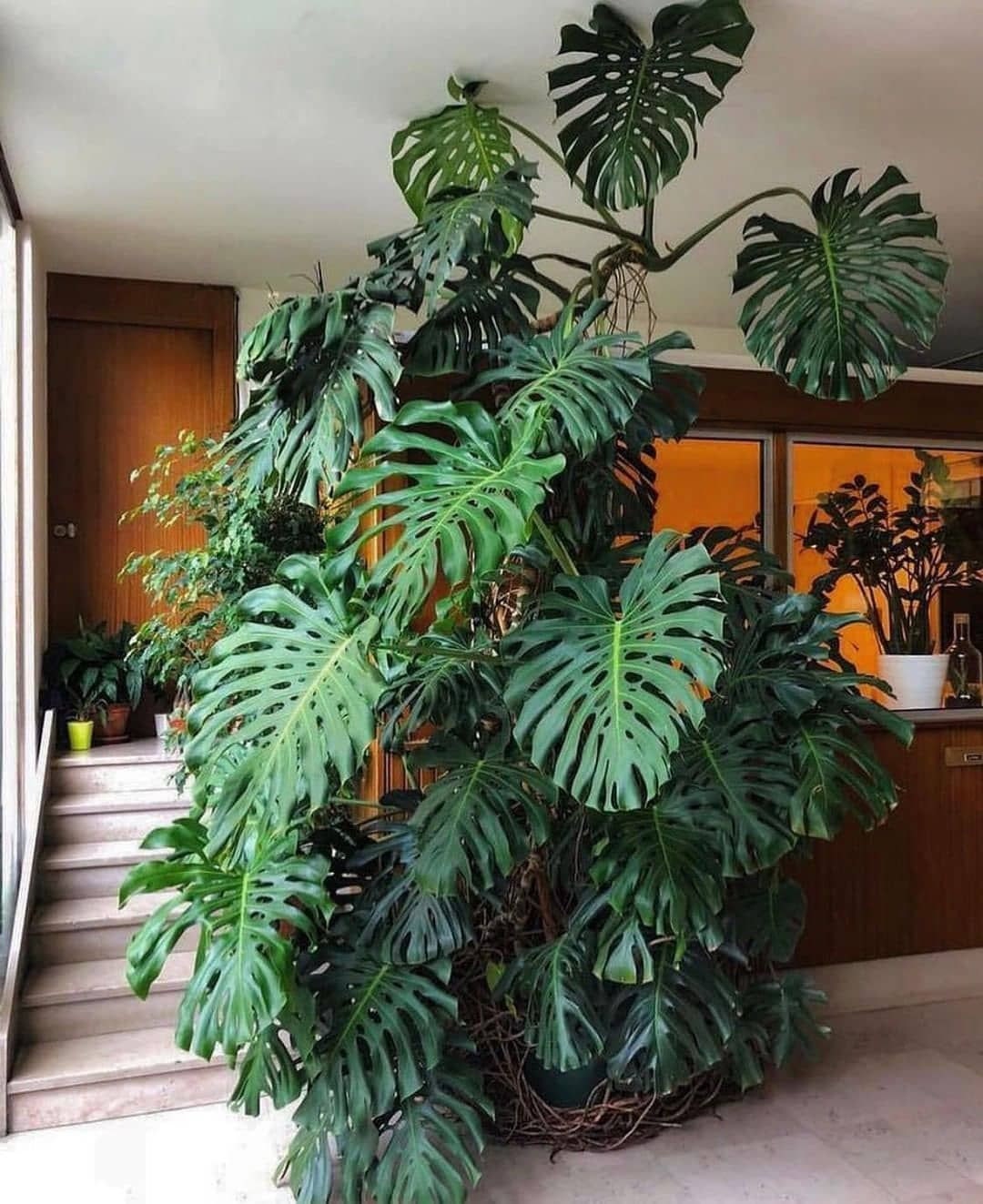The Monstera deliciosa, also known as the Swiss cheese plant or split-leaf philodendron, has become a popular houseplant in the United States. With its large, fenestrated leaves and unique appearance, it’s no wonder why this plant has captured the hearts of many indoor gardeners. In this article, we’ll explore everything you need to know about caring for, growing, and benefiting from the Monstera deliciosa.
Understanding the Monstera Deliciosa

The Monstera deliciosa is a species of flowering plant native to the tropical forests of southern Mexico, south to Panama. It belongs to the Araceae family and is known for its large, leathery, glossy, pinnate leaves that can grow up to 90 cm (35.5 inches) long. The leaves on young plants are smaller and entire with no lobes or holes, but as the plant matures, they develop the characteristic “eyes” or holes that give it its common name, “Swiss cheese plant.”
The plant is also known for its edible fruit, which has a sweet, tropical flavor reminiscent of a fruit salad. However, it’s important to note that the unripe fruit contains calcium oxalate crystals, which can cause irritation if consumed.
Care Tips for Monstera Deliciosa

Caring for a Monstera deliciosa involves providing the right light, water, and humidity conditions. Here are some essential care tips:
Light

Monstera deliciosa thrives in bright, indirect light. While it can tolerate some direct sunlight, especially in the morning, it’s best to avoid prolonged exposure to intense afternoon sun, which can scorch the leaves. A north- or east-facing window is ideal for this plant.
Water
Water your Monstera deliciosa when the top inch of soil feels dry to the touch. Overwatering can lead to root rot, so it’s important to ensure the pot has good drainage. During the winter months, reduce watering frequency as the plant’s growth slows down.
Humidity
This plant prefers high humidity levels, ideally around 80%. If your home is particularly dry, consider using a humidifier or placing a tray of water near the plant to increase humidity. Misting the leaves can also help, but be careful not to overdo it, as excess moisture can lead to fungal issues.
Temperature
Monstera deliciosa thrives in temperatures between 65°F and 85°F (18°C and 29°C). Avoid exposing the plant to cold drafts or extreme temperature fluctuations, as this can stress the plant and lead to leaf drop.
Growing Conditions for Monstera Deliciosa
To ensure healthy growth, it’s important to provide the right growing conditions for your Monstera deliciosa. Here are some key factors to consider:
Soil
Use a well-draining soil mix that retains some moisture. A combination of peat moss, perlite, and compost works well. Ensure the pot has adequate drainage holes to prevent waterlogging.
Fertilizer
Feed your Monstera deliciosa with a balanced liquid fertilizer every 4-6 weeks during the growing season (spring and summer). This will help promote healthy growth and vibrant foliage.
Pruning
Prune your Monstera deliciosa regularly to maintain its shape and encourage new growth. Remove any yellow or brown leaves, and trim back leggy stems to keep the plant compact and bushy.
Repotting
Repot your Monstera deliciosa every 2-3 years or when it becomes root-bound. Choose a pot that is only slightly larger than the current one to avoid overwatering issues.
Benefits of Having a Monstera Deliciosa
In addition to its aesthetic appeal, the Monstera deliciosa offers several benefits:
Air Purification

Like many other houseplants, the Monstera deliciosa helps purify the air by absorbing toxins and releasing oxygen. This can improve indoor air quality and create a healthier living environment.
Stress Relief
Caring for a Monstera deliciosa can be a relaxing and rewarding experience. The plant’s lush, green foliage can add a sense of calm and tranquility to any space.
Decorative Appeal
With its large, dramatic leaves, the Monstera deliciosa is a striking addition to any room. It can transform a dull corner into a vibrant, tropical oasis.
Educational Value
Growing a Monstera deliciosa can be an educational experience, especially for children. Observing the plant’s growth and learning about its care requirements can foster a love for nature and gardening.
Common Issues and Troubleshooting
Despite its resilience, the Monstera deliciosa can encounter some common issues. Here are a few problems you might face and how to address them:
Yellowing Leaves
Yellowing leaves can be a sign of overwatering, underwatering, or nutrient deficiency. Check the soil moisture and adjust your watering schedule accordingly. If the problem persists, consider fertilizing the plant.
Brown Leaf Tips
Brown leaf tips often indicate low humidity or underwatering. Increase humidity levels by misting the leaves or using a humidifier. Ensure the plant is receiving enough water, especially during the growing season.
Pest Infestations
Common pests that may affect your Monstera deliciosa include spider mites, mealybugs, and aphids. Regularly inspect the leaves for signs of infestation and treat them with neem oil or insecticidal soap.
Root Rot
Root rot can occur if the plant is overwatered or if the soil doesn’t drain properly. If you notice black, mushy roots, repot the plant in fresh, well-draining soil and adjust your watering practices.
Conclusion
The Monstera deliciosa is a beautiful and versatile houseplant that can thrive in a variety of indoor environments. With proper care and attention, it can bring a touch of the tropics to your home while offering numerous benefits. Whether you’re a seasoned gardener or a beginner, the Monstera deliciosa is a rewarding plant to grow and enjoy.
By following the care tips and troubleshooting advice provided in this article, you’ll be well-equipped to nurture your Monstera deliciosa and enjoy its stunning foliage for years to come. So, go ahead and add this magnificent plant to your collection – your home will thank you!











More Stories
What Is Yodo Para Tiroides and How Does It Affect Thyroid Health?
How to Claim Your Joy in League of Legends: A Step-by-Step Guide
What is WSET? A Comprehensive Guide to Wine Education